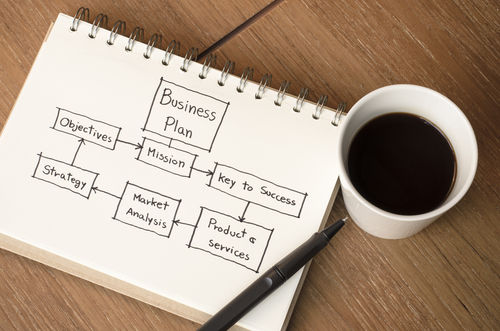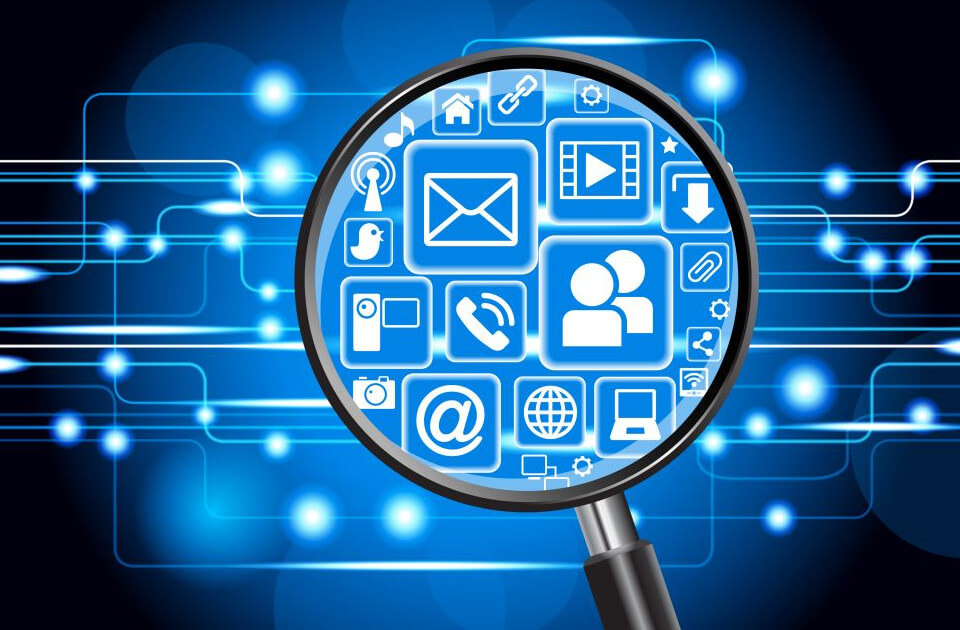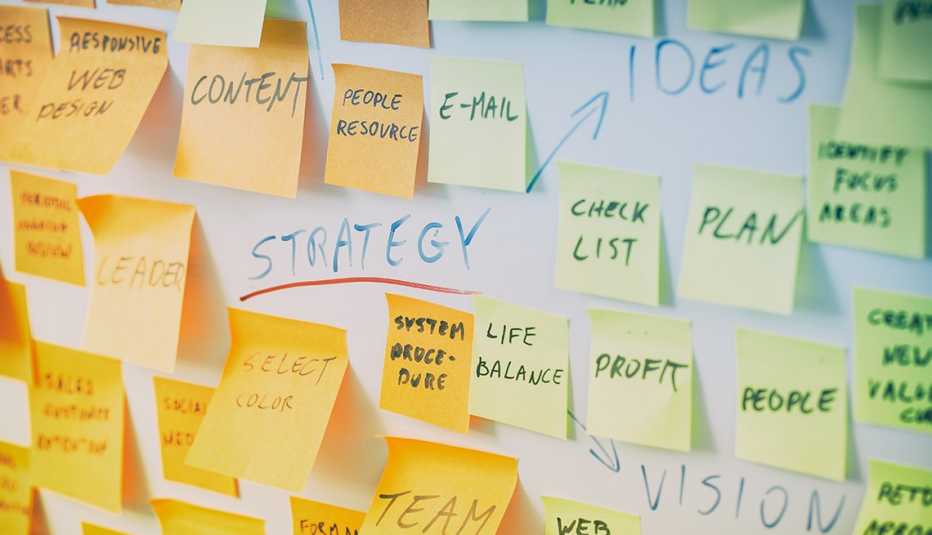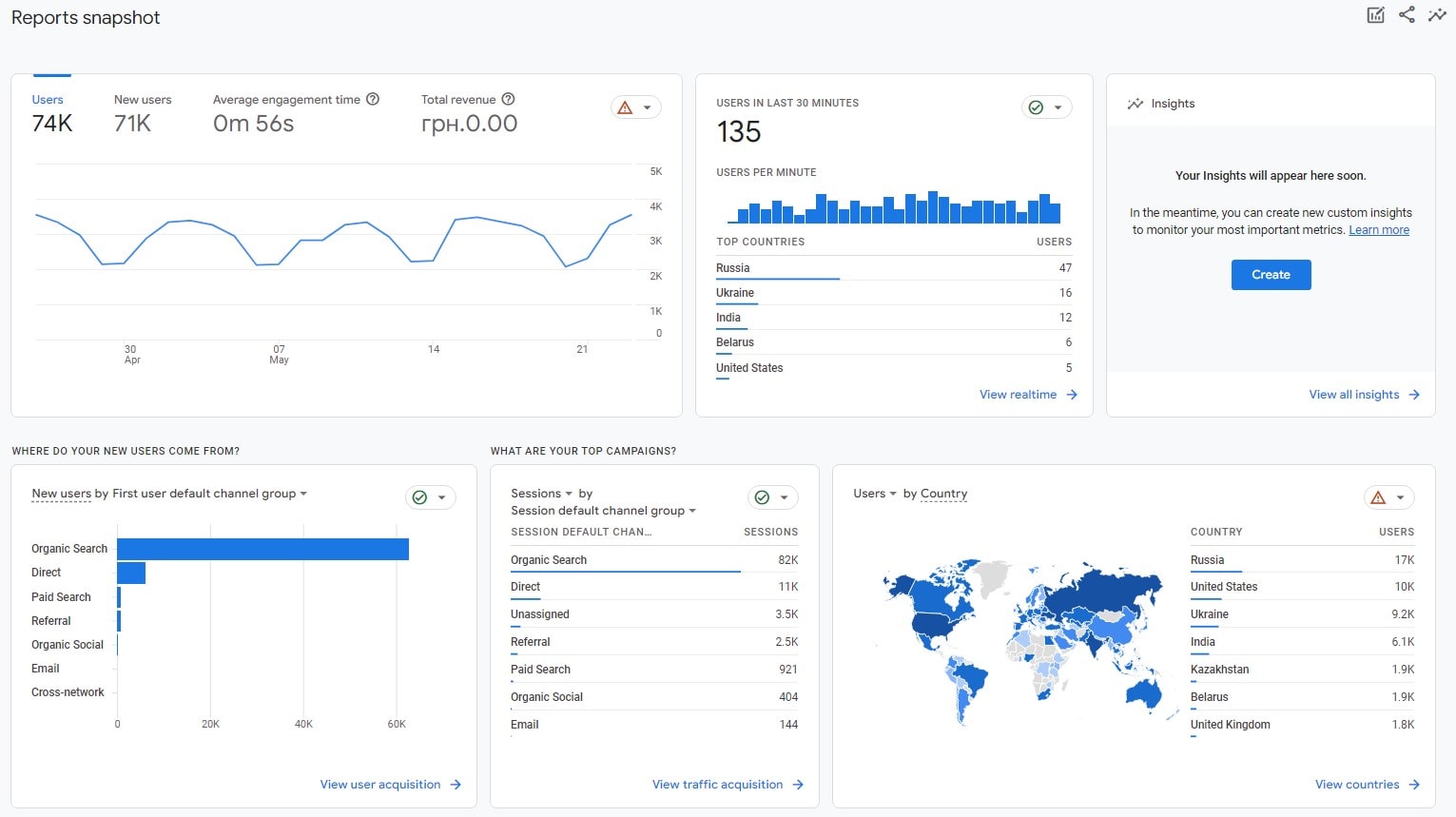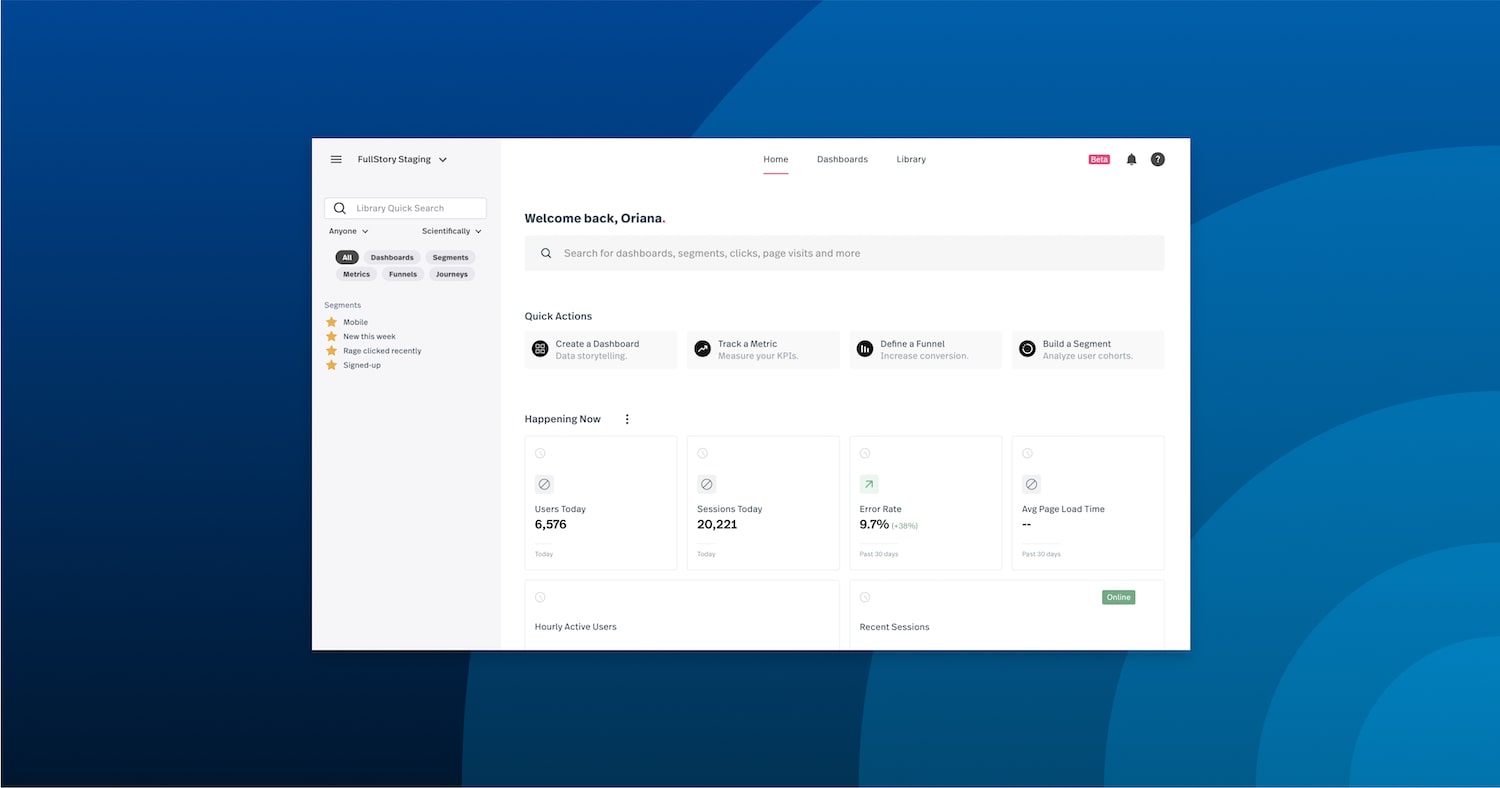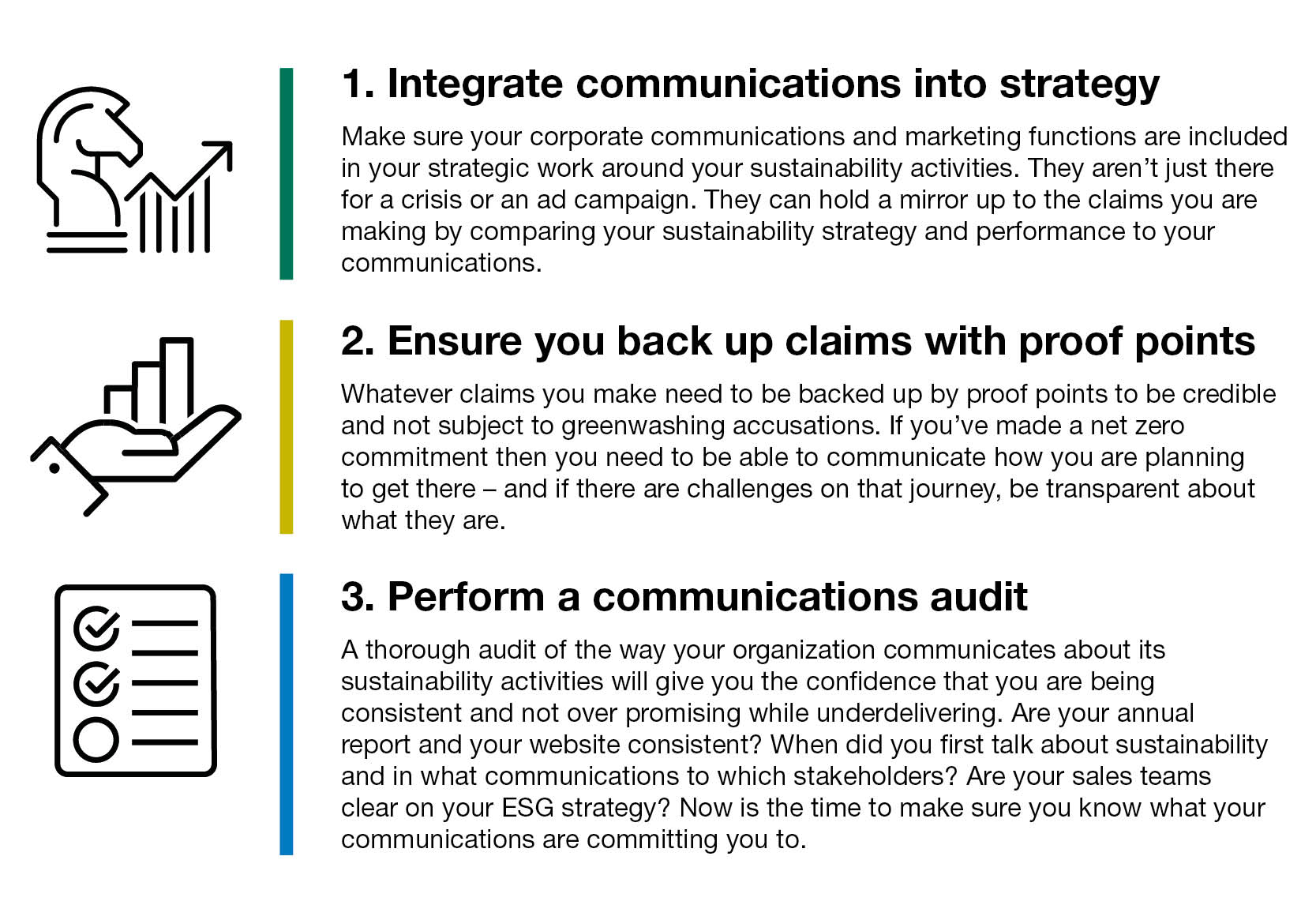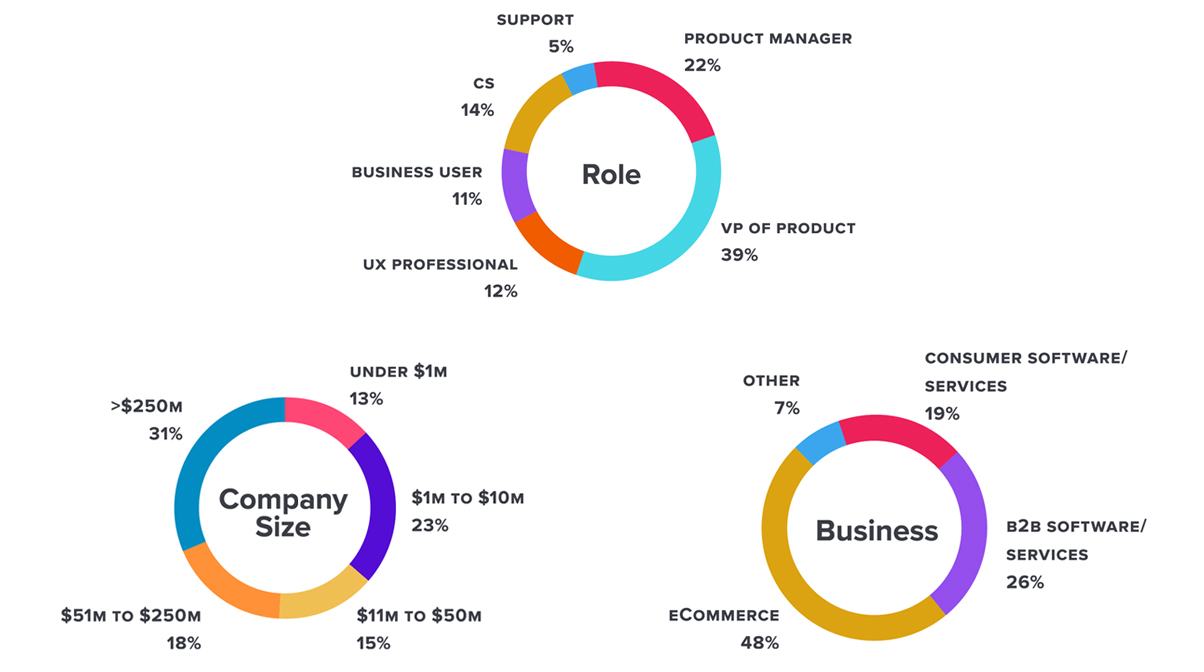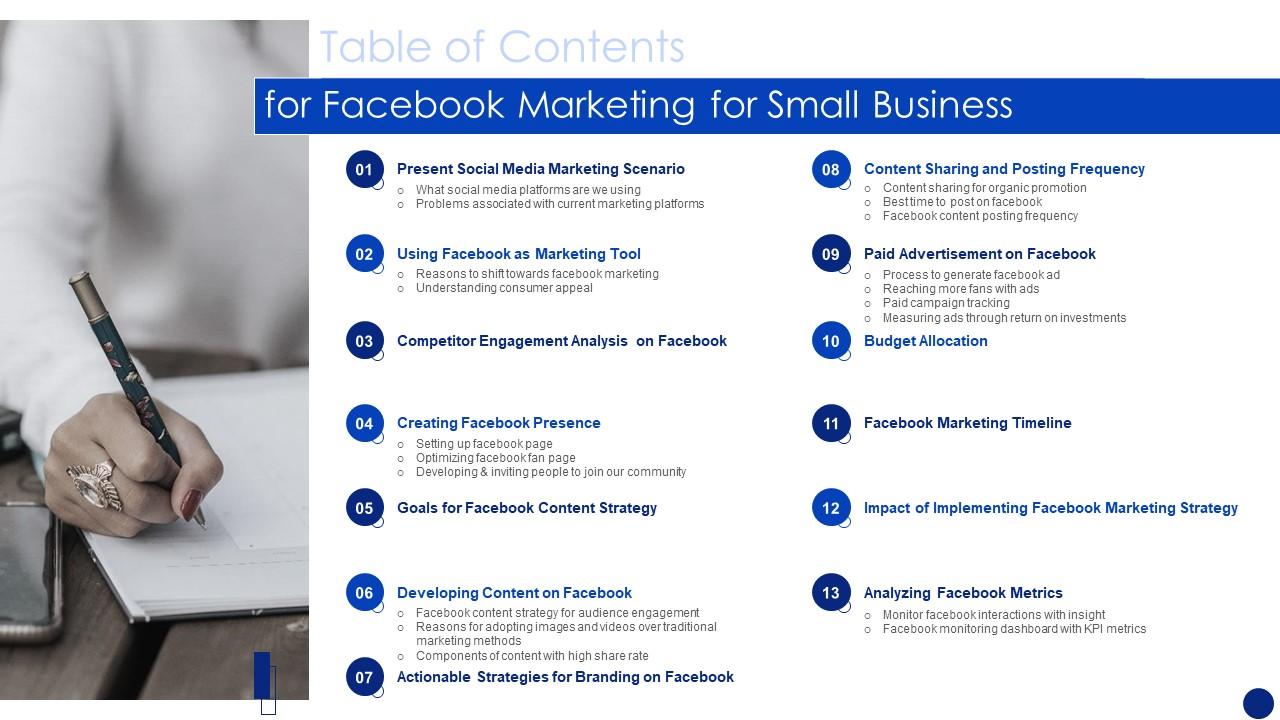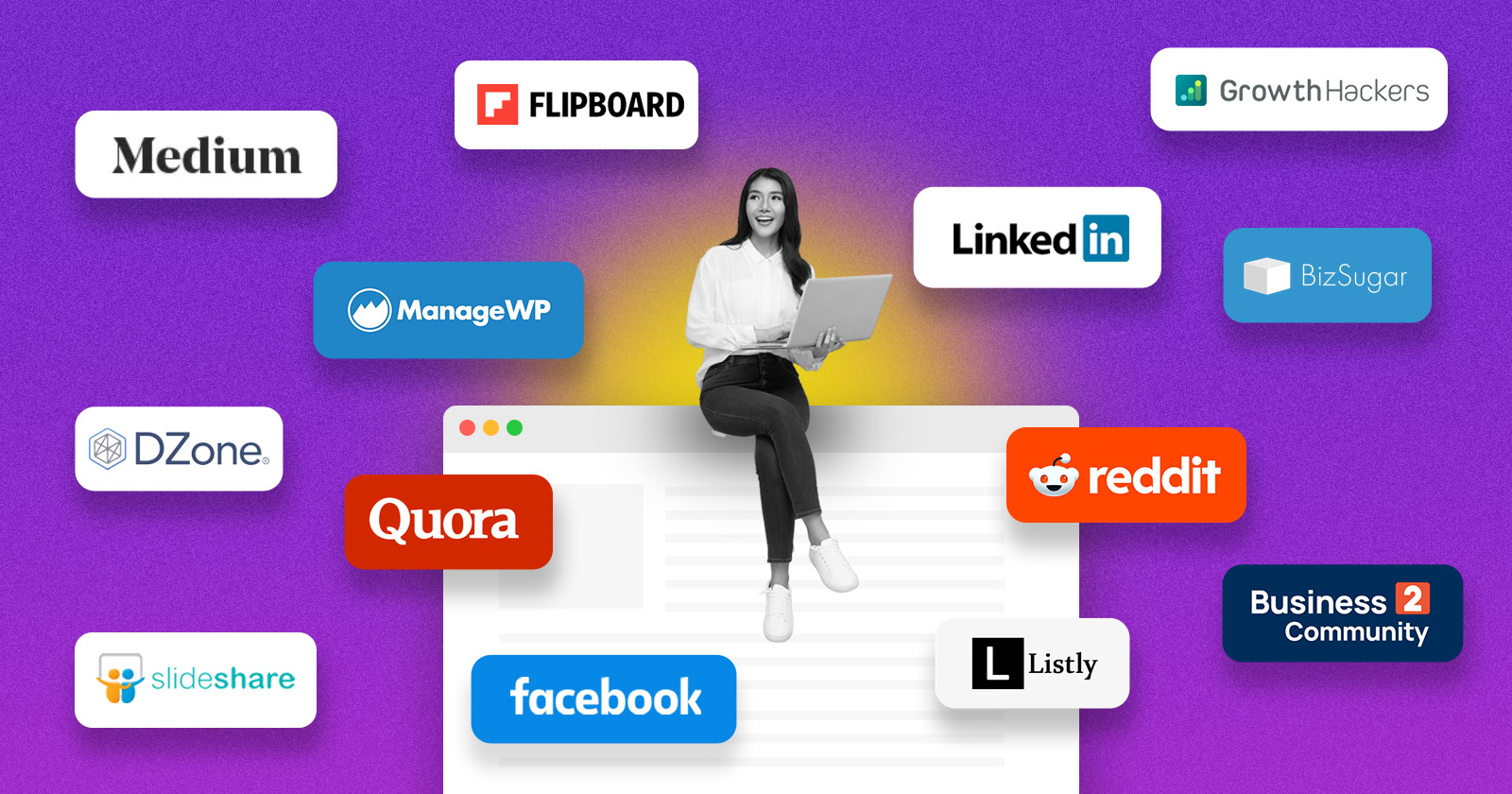
Published: Nov 30, 2024
How to Create a Killer Content Strategy in 2025: A Small Business Guide
How to Create a Killer Content Strategy in 2025: A Small Business Guide
I’ve been in the content trenches for years, and let me tell you, crafting a strategy is like trying to nail Jell-O to a wall… but way more fun! As a small business guru, I’ve seen strategies soar and flop. Now, I’m here to spill the beans on creating a content strategy that’ll make your competitors green with envy. Let’s dive in and get your content cooking!
TLDR: What's the secret sauce for a killer content strategy in 2025?
1️⃣ What are the key components of a successful content strategy in 2025?
A winning strategy includes audience research, goal-setting, channel selection, content creation, distribution planning, and performance tracking. It’s all about understanding your audience, creating valuable content, and measuring your results.
2️⃣ How often should I update my content strategy?
In the fast-paced digital world of 2025, it’s smart to review and tweak your strategy quarterly. This keeps you nimble and responsive to changing trends and audience needs. A full overhaul? Think annually, or when major shifts happen in your industry or target market.
3️⃣ What tools are essential for content strategy planning in 2025?
Must-have tools include AI-powered content generators, advanced analytics platforms, and integrated marketing suites. Look for tools that offer predictive analytics, real-time collaboration features, and multi-channel content management capabilities.
Table of Contents
- Developing High-Quality Content
- Distributing and Promoting Your Content
- Measuring and Analyzing Content Performance
- Adapting Your Strategy for the Future
- Understanding Your Audience in 2025
- Setting Clear Content Goals
- Choosing the Right Content Channels
- Creating a Content Calendar
Developing High-Quality Content
In 2025, creating top-notch content isn’t just about churning out articles. It’s about crafting experiences that resonate with your audience and stand out in a sea of digital noise. Let’s break down how you can elevate your content game and keep your readers coming back for more.
AI-Assisted Content Creation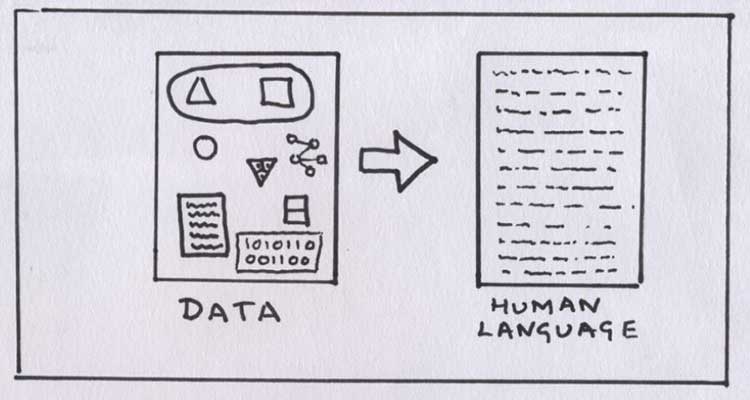
AI tools have come a long way, baby! But don’t think you can just hit a button and call it a day. The secret sauce is using AI as your brainstorming buddy, not your ghostwriter.
Here’s how to make AI work for you:
-
- Use AI to spark ideas based on trending topics in your industry
- Ask for unique angles on common subjects to freshen up your content
-
- Have AI suggest structure and key points to cover
- Refine and personalize the outline to fit your brand voice
-
- Use AI to gather relevant stats and studies quickly
- Double-check all facts – AI can sometimes mix up its sources!
Remember, AI is your sidekick, not the hero. Your human touch is what’ll make your content sing.
Personalization at Scale
Gone are the days of one-size-fits-all content. In 2025, it’s all about making each reader feel like you’re speaking directly to them.
Try these personalization tactics:
-
- Use tools that swap out sections of your content based on user data
- Tailor examples and case studies to match the reader’s industry or role
-
- Create multiple CTAs and let AI choose the best fit for each reader
- Test different CTA placements to maximize engagement
Interactive Content Formats
Static content? Boring! In 2025, it’s all about getting your audience involved.
Here are some interactive formats to try:
-
- Create fun quizzes that also educate your audience about your products or services
- Offer personalized recommendations based on quiz results
-
- Take your audience on virtual tours of your products or workspace
- Use hotspots to provide additional info or links within the video
-
- Let customers virtually “try on” products or visualize services
- Create AR filters or games that align with your brand message
Maintaining Authenticity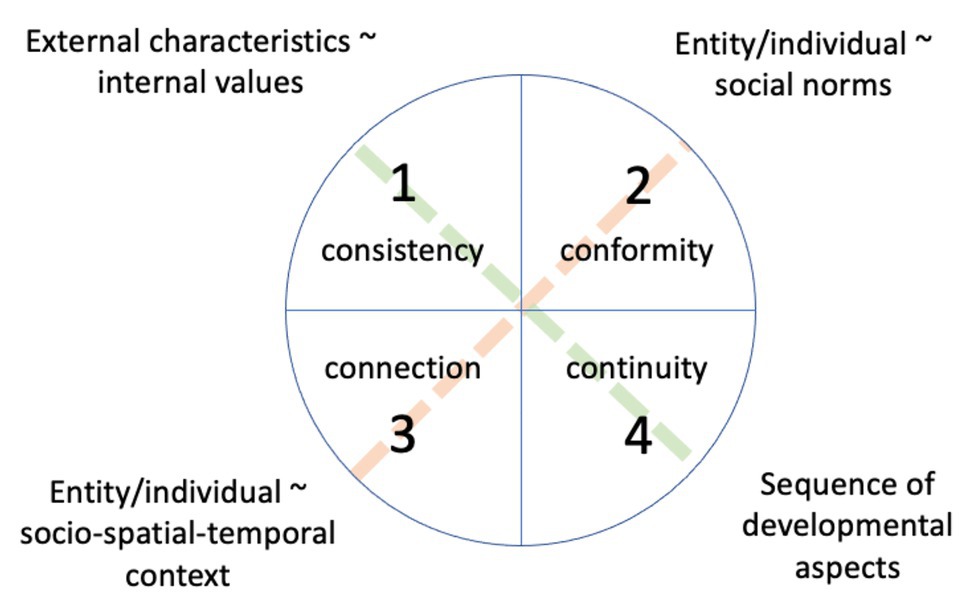
With all this tech at our fingertips, it’s easy to lose sight of what matters most – being real. Your audience can smell fake from a mile away, so keep it authentic!
Tips for keeping it real:
Share Behind-the-Scenes Content
- Give glimpses into your day-to-day operations
- Introduce team members and share their stories
-
- Encourage customers to share their experiences with your brand
- Feature customer stories and testimonials prominently
-
- Be open about your processes, even when things don’t go perfectly
- Address mistakes or issues head-on, showing how you’re improving
Evergreen vs. Trending Content
Balancing timeless pieces with hot topics is key to a well-rounded content strategy.
Here’s how to strike that balance:
Evergreen Content
- Create comprehensive guides on core topics in your industry
- Regularly update these pieces to keep them fresh and relevant
Trending Content
- Set up alerts for breaking news in your field
- Be ready to pivot and create timely content when big stories hit
Pro tip: Repurpose your evergreen content into trending formats. That ultimate guide you wrote last year? Turn it into a TikTok series!
Content Accessibility
In 2025, making your content accessible isn’t just nice – it’s necessary. Here’s how to ensure everyone can enjoy your content:
- Alt Text
 Describe images clearly for screen readers
Describe images clearly for screen readers - Closed Captions Add captions to all video content
- Transcripts Provide written versions of audio content
- Color Contrast Ensure text is easily readable against backgrounds
Remember, accessible content isn’t just for those with disabilities – it improves the experience for everyone.
Creating high-quality content in 2025 is all about blending tech savvy with human creativity. Keep experimenting, stay true to your brand, and always put your audience first. With these strategies in your toolkit, you’ll be cranking out content that not only ranks well but resonates deeply with your readers. Now go forth and create something awesome!
Distributing and Promoting Your Content
Getting your content in front of the right eyes is half the battle. In 2025, it’s not just about creating great stuff—it’s about making sure it reaches your audience. Let’s dive into some killer strategies to get your content the attention it deserves.
Social Media Marketing
Social media is still king in 2025, but the landscape has shifted. Here’s how to make the most of it:
-
- Create short, snappy videos that showcase your brand personality
- Use trending sounds and challenges to boost visibility
-
- Repurpose your TikTok content for Instagram to maximize reach
- Use Instagram’s shopping features to make your content shoppable
-
- Share thought leadership pieces and industry insights
- Engage in relevant groups and conversations to build your network
Pro tip: Don’t spread yourself too thin. Pick 2-3 platforms where your audience hangs out and crush it there.
Email Marketing
Email isn’t dead—it’s thriving! Here’s how to make your emails stand out:
Personalization
- Use AI to tailor content based on subscriber behavior and preferences
- Segment your list for more targeted campaigns
-
- Include polls, quizzes, or clickable elements within your emails
- Use AMP for email to create dynamic, app-like experiences
Content Syndication
Why limit your content to just your own channels? Syndication can help you reach new audiences:
- Partner with industry publications to republish your best pieces
- Use platforms like Medium or LinkedIn Articles to expand your reach
Just remember to include a canonical link back to the original post on your site to avoid SEO issues.
Influencer Partnerships
Influencer marketing has evolved. It’s not just about big names anymore:
- Collaborate with micro-influencers in your niche for authentic reach
- Co-create content that provides value to both your audiences
Paid Advertising
Sometimes you gotta pay to play. Here’s how to make your ad spend count:
- Use retargeting to show ads to people who’ve already engaged with your content
- Experiment with native advertising on platforms like Outbrain or Taboola
Podcasting
Audio content is huge in 2025. Get in on the action:
- Start your own podcast or be a guest on others in your industry
- Repurpose podcast content into blog posts, social media snippets, and videos
User-Generated Content (UGC)
Let your customers do some of the heavy lifting:
- Run contests encouraging users to create content featuring your products
- Showcase customer stories and testimonials across your channels
Community Building
Foster a sense of belonging around your brand:
- Create a Discord server or Facebook Group for your most engaged followers
- Host virtual events or AMAs (Ask Me Anything sessions) to connect directly with your audience
Content Hubs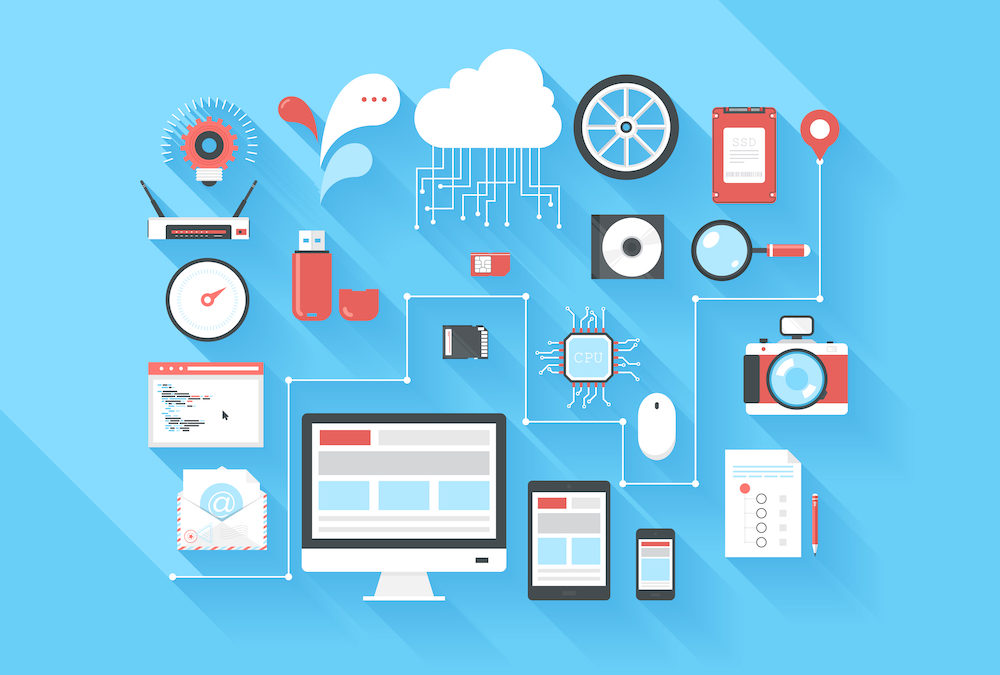
Make it easy for people to find all your great content in one place:
- Create a resource center on your website with all your best pieces
- Organize content by topic, format, and user journey stage
SEO Optimization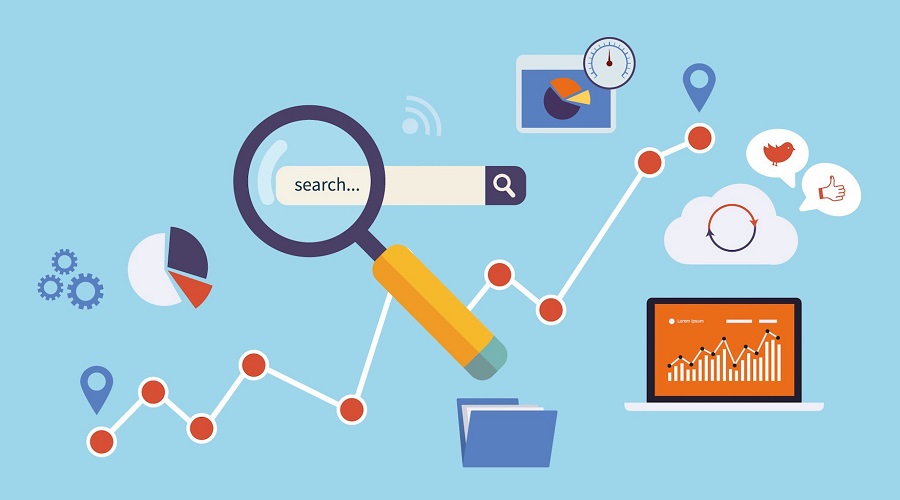
Don’t forget about good ol’ SEO:
- Keep up with the latest algorithm changes (hello, AI-first indexing!)
- Focus on creating comprehensive, authoritative content that answers user queries
Remember, distribution isn’t a “set it and forget it” deal. Keep an eye on what’s working and be ready to pivot. The key is to get your content in front of your audience where they’re already hanging out.
Now go forth and spread that content love! Your audience is waiting.
Measuring and Analyzing Content Performance
Let’s face it - creating killer content is only half the battle. If you’re not tracking how it performs, you might as well be shouting into the void. In 2025, we’ve got some seriously cool tools to help us figure out what’s working and what’s not. Let’s dive into how you can measure your content’s success and use that data to level up your strategy.
Key Performance Indicators (KPIs)
First things first - you need to know what you’re measuring. Here are some KPIs to keep an eye on:
Traffic
- Unique visitors
- Page views
- Time on page
Engagement
- Comments
- Shares
- Likes
Conversions
- Lead generation
- Sales
- Email sign-ups
SEO Performance
- Organic search rankings
- Backlinks
- Domain authority
Pro tip: Don’t get overwhelmed by all the numbers. Pick 3-5 KPIs that align with your goals and focus on those.
Advanced Analytics Tools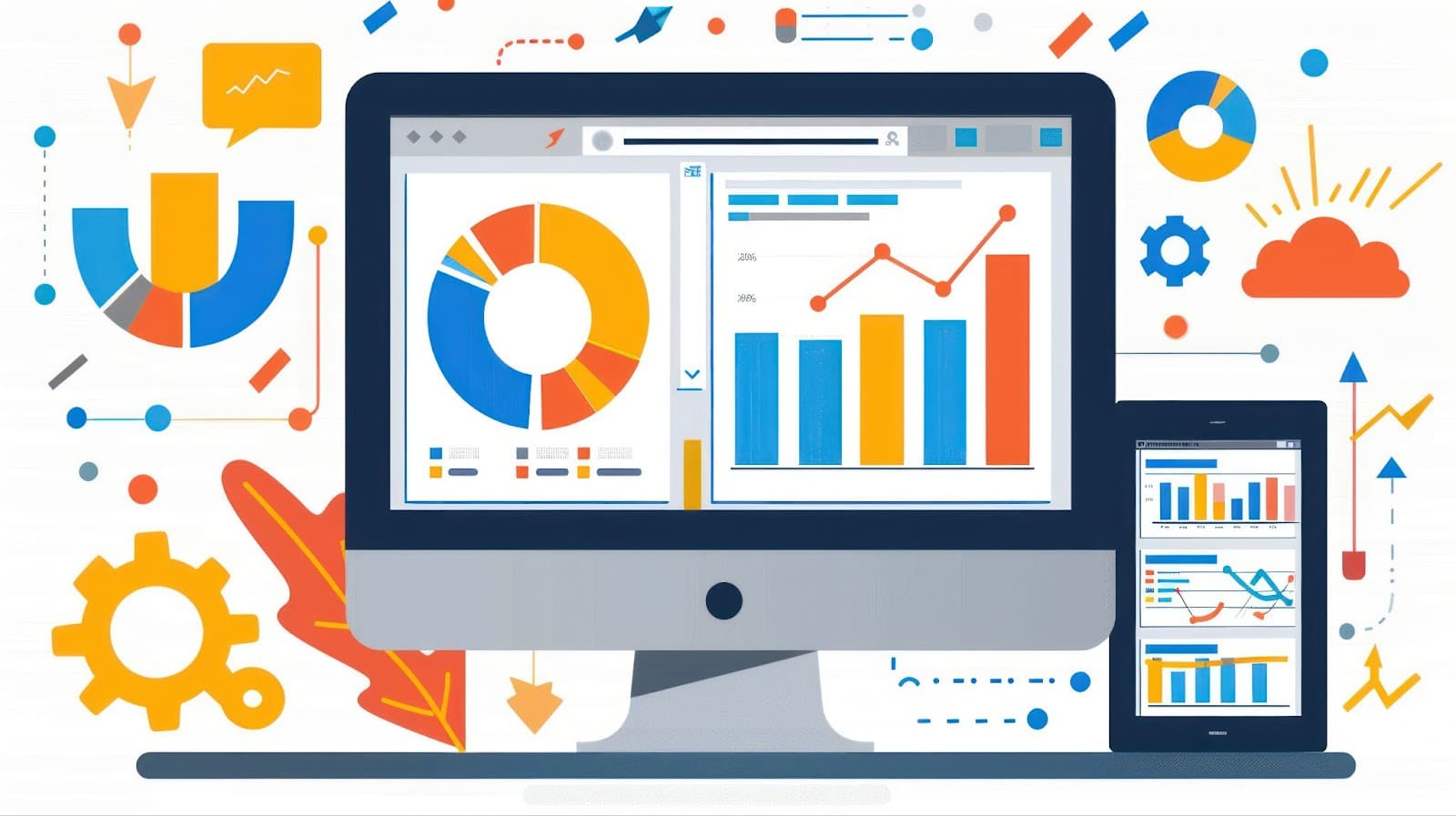
In 2025, we’ve got some pretty nifty tools to help us make sense of all this data:
(Yeah, they’ve upgraded again!)
- Uses AI to predict future trends based on your historical data
- Offers real-time content recommendations to boost performance
-
- Provides detailed keyword performance tracking
- Offers competitive analysis to see how you stack up against others in your niche
-
- Creates heatmaps to show where users are clicking and scrolling
- Offers session recordings to see how real users interact with your content
AI-Powered Insights
AI isn’t just for creating content - it’s revolutionizing how we analyze it too:
Predictive Analytics
- Uses machine learning to forecast which content topics will trend
- Helps you plan your content calendar based on predicted performance
Sentiment Analysis
- Analyzes comments and social media mentions to gauge audience reaction
- Helps you understand the emotional impact of your content
Content Optimization Suggestions
- Provides real-time recommendations for improving underperforming content
- Suggests optimal posting times based on audience behavior
A/B Testing
Don’t just guess what works - test it! Here’s what you can A/B test:
- Headlines
- Call-to-action buttons
- Images and visuals
- Content length
- Content format (e.g., video vs. text)
Remember, small changes can lead to big improvements in performance.
Content Attribution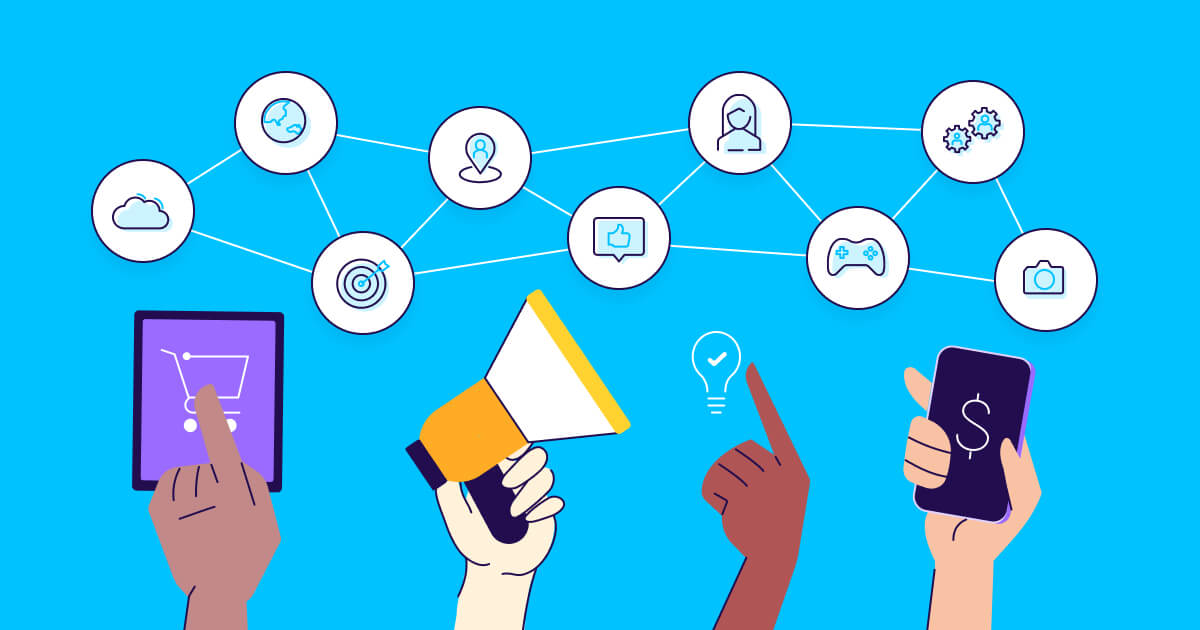
In 2025, we’re not just looking at last-click attribution. Multi-touch attribution models help us understand the full customer journey:
-
- Gives equal credit to all touchpoints in the conversion path
-
- Assigns more credit to touchpoints closer to the conversion
-
- Uses machine learning to determine the impact of each touchpoint
Social Listening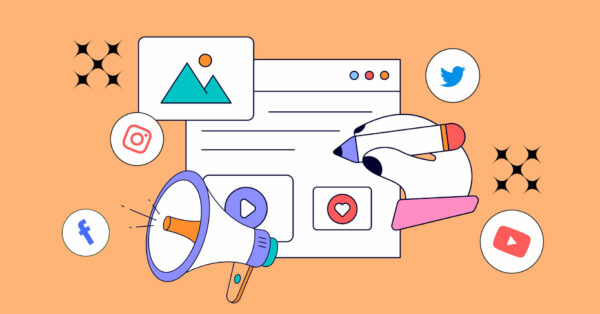
Don’t just track what’s happening on your own channels. Use social listening tools to:
- Monitor brand mentions across the web
- Track industry trends and conversations
- Identify potential collaboration opportunities
Competitive Analysis
Keep an eye on what your competitors are up to:
- Track their content performance
- Identify gaps in their strategy that you can fill
- Benchmark your performance against industry standards
Interpreting the Data
All these fancy tools are great, but they’re useless if you don’t know how to interpret the data. Here are some tips:
Look for Patterns
- Are certain types of content consistently outperforming others?
- Do you see spikes in engagement at specific times?
Context is Key
- A drop in traffic might not be bad if your conversion rate is up
- Consider external factors (like holidays or world events) that might impact your numbers
Don’t Just Look at the Numbers
- Use qualitative data (like customer feedback) to complement your quantitative metrics
- Sometimes the most valuable insights come from actually talking to your audience
Using Data to Refine Your Strategy
Now that you’ve got all this data, what do you do with it? Here’s how to put it into action:
Double Down on What Works
- Identify your top-performing content and create more like it
- Repurpose successful content into different formats
Improve Underperforming Content
- Use AI suggestions to optimize low-performing pieces
- Consider updating or consolidating older content
Experiment with New Ideas
- Use predictive analytics to try out emerging topics
- Test new content formats or distribution channels
Personalize Your Approach
- Use audience insights to tailor content to different segments
- Create custom content journeys based on user behavior
Remember, measuring and analyzing your content performance isn’t a one-time thing. It’s an ongoing process of learning, adjusting, and improving. Keep at it, and you’ll see your content strategy get stronger and more effective over time.
Now go forth and crunch those numbers! Your content (and your audience) will thank you for it.
Adapting Your Strategy for the Future
The content marketing world moves at lightning speed. What worked yesterday might not cut it tomorrow. So how do you stay ahead of the curve? Let’s dive into some strategies to keep your content fresh and effective in 2025 and beyond.
Artificial Intelligence in Content Creation
AI isn’t just a buzzword anymore. It’s a game-changer for content creators. Here’s how to use it wisely:
-
- Use tools like GPT-4 to brainstorm ideas and overcome writer’s block
- Let AI handle first drafts, but always add your human touch for authenticity
-
- Leverage AI to create tailored content experiences for different audience segments
- Use predictive analytics to serve up the right content at the right time
Remember, AI is your sidekick, not your replacement. The goal is to enhance your creativity, not stifle it.
Embracing New Content Formats
Text-based content isn’t going anywhere, but multimedia is king. Here’s what’s hot:
-
- Create immersive brand experiences
- Offer virtual product demos or tours
Augmented Reality (AR) Overlays
- Develop AR filters for social media platforms
- Create interactive product catalogs
-
- Optimize for voice search queries
- Create audio content for smart speakers
Data Privacy and Content Strategy
With data privacy laws tightening up, your content strategy needs to adapt:
First-Party Data Collection
- Focus on building direct relationships with your audience
- Use quizzes, surveys, and interactive content to gather data ethically
-
- Move away from relying solely on user data for ad targeting
- Create content that naturally attracts your target audience
Sustainability in Content Marketing
Green is the new black. Here’s how to make your content strategy more eco-friendly:
Digital Decluttering
- Regularly audit and remove outdated or underperforming content
- Optimize file sizes to reduce server energy consumption
-
- Highlight your brand’s eco-friendly initiatives
- Create content that educates your audience on sustainability issues
Staying Ahead of Algorithm Changes
Search engines and social platforms are always tweaking their algorithms. Stay on top of it:
-
- Focus on creating expert, authoritative, and trustworthy content
- Build your brand’s credibility through thought leadership
User Intent Optimization
- Create content that directly answers user queries
- Use schema markup to help search engines understand your content
Hyper-Localization
Even in a global market, local still matters. Here’s how to think locally:
Geo-Targeted Content
- Create content specific to different regions or cities
- Use local SEO strategies to boost visibility in specific areas
-
- Engage with local influencers and thought leaders
- Create content that addresses local issues and events
Continuous Learning and Adaptation
The only constant in content marketing is change. Here’s how to keep up:
-
- Attend events like Content Marketing World or MozCon
- Network with other professionals and learn about emerging trends
Online Courses and Certifications
- Take courses on platforms like Coursera or HubSpot Academy
- Stay updated on the latest tools and techniques
Experimentation
- Set aside a portion of your budget for trying new content formats or platforms
- Run A/B tests to continuously optimize your strategy
Remember, adapting your strategy isn’t about chasing every shiny new trend. It’s about being flexible, staying curious, and always putting your audience first. Keep your ear to the ground, be willing to pivot when necessary, and never stop learning. That’s how you’ll create a content strategy that doesn’t just survive the future—it thrives in it.
Now go forth and conquer the content world of tomorrow!
Understanding Your Audience in 2025
In 2025, knowing your audience isn’t just important—it’s everything. With so much content out there, you’ve got to nail down exactly who you’re talking to if you want to stand out. Let’s dive into how you can really get to know your audience and create content that speaks directly to them.
AI-Powered Analytics
AI has changed the game when it comes to understanding your audience. Here’s how you can use it:
Predictive Behavior Modeling
- Use AI to forecast what content your audience will want next
- Anticipate trends before they even hit the mainstream
-
- Get a real-time pulse on how your audience feels about your content
- Adjust your tone and topics based on emotional responses
-
- Analyze comments and social media posts to understand your audience’s language
- Tailor your content to match their communication style
Buyer Personas 2.0
Forget those old-school, static buyer personas. In 2025, we’re talking dynamic, evolving profiles:
Real-Time Updates
- Use data from customer interactions to continuously refine your personas
- Adapt your content strategy as your audience’s needs and preferences change
Micro-Segmentation
- Break down your audience into hyper-specific groups
- Create tailored content for niche interests within your broader audience
Social Listening on Steroids
on Steroids
It’s not just about monitoring mentions anymore. Here’s how to take social listening to the next level:
-
- Understand the full context of conversations about your brand or industry
- Identify emerging topics and pain points your content can address
Cross-Platform Insights
- Track how conversations and trends move across different social platforms
- Tailor your content strategy for each platform based on audience behavior
Behavioral Analytics
Get inside your audience’s head by analyzing their actions:
Content Consumption Patterns
- Track which types of content your audience engages with most
- Analyze how they move through your content ecosystem
-
- Understand how your audience interacts with your brand across all touchpoints
- Create content that guides them smoothly through each stage of the journey
Voice of Customer (VoC) Programs
Don’t just guess what your audience wants—ask them:
-
- Use AI-powered surveys that adapt based on previous responses
- Implement continuous feedback mechanisms in your content
-
- Involve your audience in the content creation process
- Host virtual brainstorming sessions or idea contests
Psychographic Profiling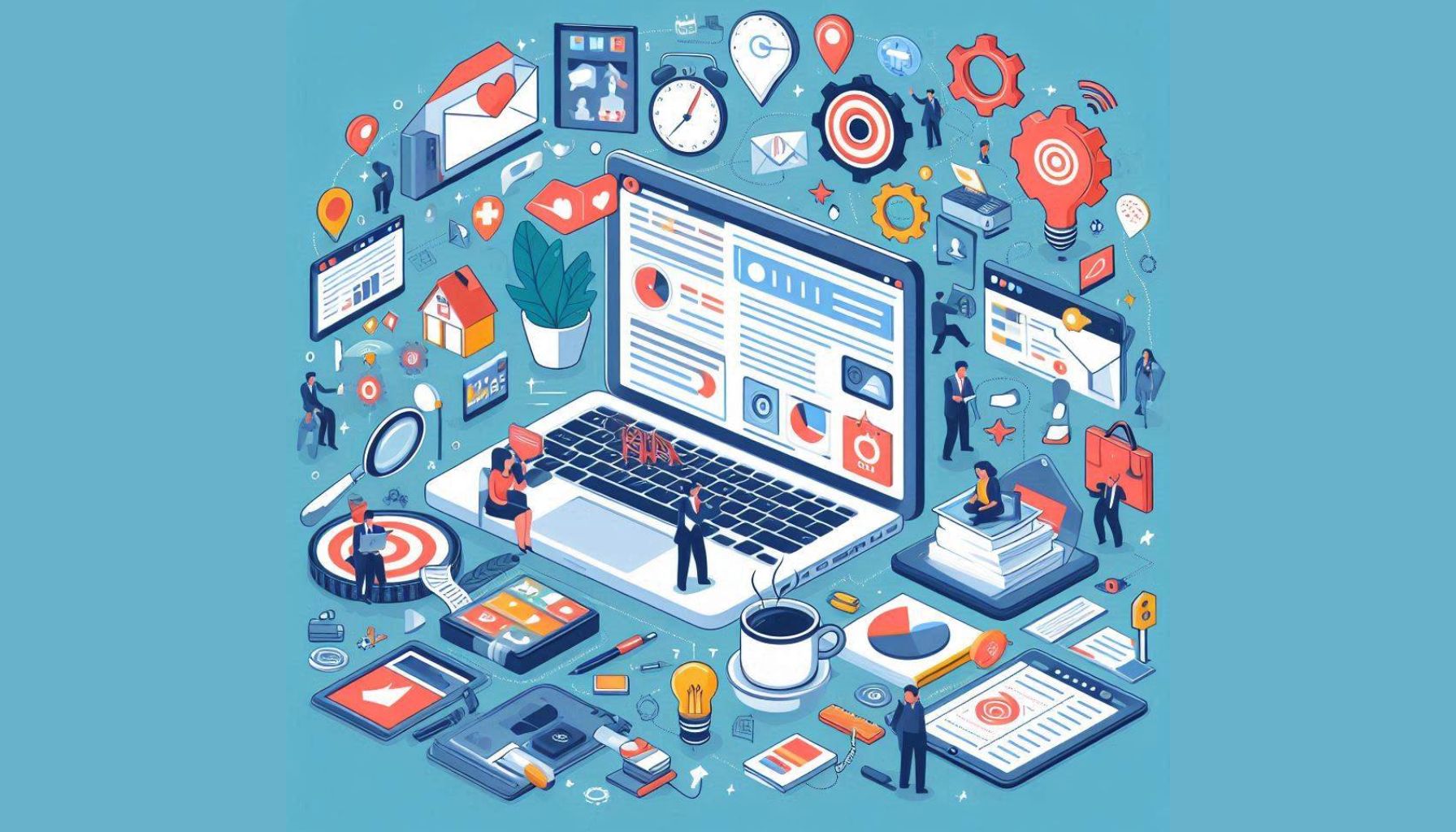
Go beyond demographics to understand what makes your audience tick:
Values and Beliefs
- Analyze social media activity to understand your audience’s core values
- Create content that aligns with their beliefs and worldviews
Lifestyle and Interests
- Use data from partner apps and services to get a holistic view of your audience’s lifestyle
- Develop content themes that resonate with their interests outside of your product or service
Neuroscience in Content Marketing
Yeah, we’re going deep. Here’s how brain science is helping us understand audiences:
-
- Use eye-tracking data to optimize your content layout and design
- Understand which elements of your content grab attention and which are ignored
-
- Analyze brain activity to understand emotional responses to your content
- Craft messages that trigger positive emotional connections
Putting It All Together
All this data is great, but it’s useless if you don’t know how to apply it. Here’s how to turn insights into action:
Content Personalization at Scale
- Use AI to create dynamically personalized content for different audience segments
- Tailor everything from email subject lines to blog post recommendations
Predictive Content Strategy
- Use your audience insights to predict future content needs
- Stay ahead of the curve by creating content before your audience even knows they want it
Continuous Optimization
- Set up systems for real-time content performance tracking
- Use AI to automatically tweak and improve content based on audience response
Remember, understanding your audience in 2025 isn’t a one-and-done deal. It’s an ongoing process of learning, adapting, and refining. The more you know about your audience, the better you can serve them with killer content that hits the mark every time.
Now go forth and get to know your people! Your content (and your bottom line) will thank you for it.
Setting Clear Content Goals
Let’s face it, without clear goals, your content strategy is like a ship without a compass. You might be moving, but are you really going anywhere? In 2025, setting smart content goals isn’t just about throwing numbers at the wall and seeing what sticks. It’s about aligning your content efforts with your business objectives and your audience’s needs. Let’s dive into how you can set goals that’ll make your content work harder for you.
SMART Goals
You’ve probably heard of SMART goals before, but let’s break ‘em down for content marketing:
- Specific: Don’t just say “increase traffic.” Say “increase organic traffic to our blog by 25%.”
- Measurable: Make sure you can track it. Tools like Google Analytics are your best friend here.
- Achievable: Be ambitious, but realistic. A 1000% increase in a month? Probably not gonna happen.
- Relevant: Does it align with your overall business goals? If not, why bother?
- Time-bound: Set a deadline. “By the end of Q2” gives you something to work towards.
Goal-Setting in Action
Let’s look at some examples of SMART goals for different types of small businesses:
E-commerce Store
- Goal: Increase product page conversion rate from 2% to 3% within 3 months by creating detailed, benefit-focused product descriptions and adding customer reviews.
Local Coffee Shop
- Goal: Boost Instagram followers from 500 to 2,000 in 6 months by posting daily behind-the-scenes content and running a weekly “latte art challenge” contest.
B2B Software Company
- Goal: Generate 50 qualified leads per month from content marketing efforts within 4 months by producing in-depth case studies and industry reports.
Aligning Goals with Business Objectives
Your content goals should ladder up to your bigger business objectives. Here’s how:
- Brand Awareness: If you’re trying to get your name out there, focus on reach metrics like impressions, social shares, and new website visitors.
- Customer Acquisition: Look at lead generation numbers, email sign-ups, or trial starts.
- Customer Retention: Track engagement metrics like time on page, return visitors, or customer lifetime value.
Key Performance Indicators (KPIs)
Once you’ve set your goals, you need to know how you’re tracking. Here are some KPIs to consider:
Traffic Metrics
- Unique visitors
- Page views
- Time on page
Engagement Metrics
- Social shares
- Comments
- Email open and click-through rates
Conversion Metrics
- Lead generation forms filled
- Product demo requests
- Actual sales
SEO Metrics
- Organic search rankings
- Domain authority
- Backlinks earned
Pro tip: Don’t try to track everything. Pick 3-5 KPIs that directly relate to your goals and focus on those.
Setting Realistic Expectations
Look, we all want to go viral and see our content blow up overnight. But that’s like expecting to win the lottery - it might happen, but you shouldn’t bank on it. Instead:
- Look at your historical data. If you’ve been growing traffic by 5% month-over-month, setting a goal of 50% growth next month probably isn’t realistic.
- Check out industry benchmarks. Tools like Semrush can give you an idea of what’s normal in your niche.
- Start small and scale up. It’s better to exceed modest goals than to fall short of overly ambitious ones.
Objectives and Key Results (OKRs)
Some businesses prefer OKRs to traditional goal-setting. Here’s how it might look for content:
- Objective: Become the go-to resource for small business marketing advice
- Key Results:
- Publish 20 in-depth guides on different marketing topics
- Increase average time on page for blog posts from 2 minutes to 4 minutes
- Earn backlinks from 50 high-authority industry websites
Involving Your Team
Goal-setting shouldn’t be a top-down process. Get your team involved:
- Brainstorm goals together. Your content creators might have insights you haven’t considered.
- Make sure everyone understands how their work contributes to the bigger picture.
- Celebrate wins together. When you hit a goal, make it a big deal!
Adapting Goals as You Go
The beauty of digital marketing is that you get data in real-time. Use it:
- Check in on your progress regularly. Monthly reviews are good, but weekly is even better.
- Don’t be afraid to adjust your goals if circumstances change. A global pandemic hits? Yeah, you might need to revisit those targets.
- Learn from misses. If you don’t hit a goal, figure out why and use that info to set better goals next time.
Remember, setting clear content goals isn’t about restricting your creativity or turning your content team into a bunch of number-crunching robots. It’s about giving your efforts direction and purpose. With clear goals, you can create content that not only resonates with your audience but also drives real business results.
Now go forth and goal-set like a boss! Your content (and your bottom line) will thank you for it.
Choosing the Right Content Channels
In 2025, the content landscape is more diverse than ever. Picking the right channels to distribute your content can make or break your strategy. Let’s dive into how you can choose the perfect mix of platforms to reach your audience and achieve your goals.
Omnichannel Presence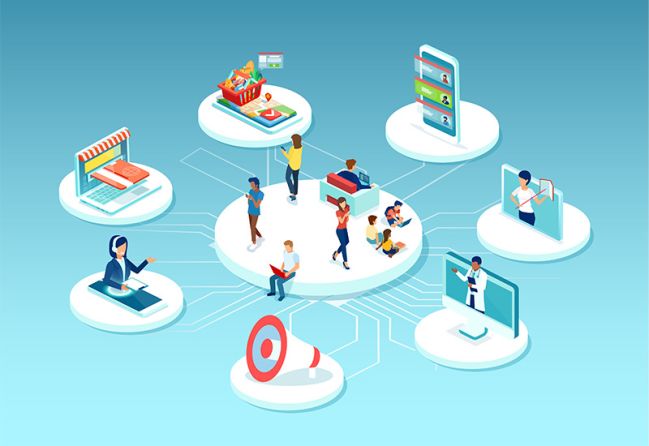
Gone are the days of putting all your eggs in one basket. An omnichannel approach is key:
Cross-Platform Consistency
- Ensure your brand voice is consistent across all channels
- Adapt your content format to suit each platform while maintaining your core message
Integrated Customer Experience
- Create seamless transitions between channels (e.g., from social media to your website)
- Use retargeting to continue the conversation across different platforms
Social Media Platforms
Social media is still king, but not all platforms are created equal. Here’s a breakdown:
-
- Perfect for short-form, entertaining content
- Great for reaching younger audiences and going viral
-
- Ideal for visually-driven brands
- Use Reels for short-form video and Stories for behind-the-scenes content
-
- Best for B2B content and thought leadership
- Share industry insights and company updates
-
- Great for real-time engagement and customer service
- Share quick updates and join trending conversations
-
- Still valuable for community building and targeted advertising
- Ideal for longer-form video content and live streaming
Pro tip: Don’t try to be everywhere. Pick 2-3 platforms where your audience is most active and crush it there.
Email Marketing
Email isn’t dead – it’s evolved. Here’s how to make it work in 2025:
Personalization at Scale
- Use AI to tailor content based on subscriber behavior and preferences
- Segment your list for more targeted campaigns
Interactive Emails
- Include polls, quizzes, or clickable elements within your emails
- Use AMP for email to create dynamic, app-like experiences
Podcasting
Audio content is huge in 2025. Get in on the action:
- Start your own podcast or be a guest on others in your industry
- Repurpose podcast content into blog posts, social media snippets, and videos
Video Platforms
Video content is no longer optional. Here’s where to focus:
-
- Great for long-form, educational content
- Use for product demos, tutorials, and behind-the-scenes videos
-
- Perfect for live streaming and real-time engagement
- Consider for Q&A sessions, product launches, or behind-the-scenes content
Blogging Platforms.jpg)
Don’t underestimate the power of written content:
Your Own Website
- Build a robust content hub on your own domain
- Great for SEO and establishing thought leadership
-
- Tap into Medium’s built-in audience
- Republish your best content for wider reach
Emerging Platforms
Keep an eye on new platforms gaining traction:
-
- Create immersive brand experiences
- Host virtual events or product demos
-
- Develop AR filters or interactive product catalogs
- Enhance real-world experiences with digital overlays
Choosing the Right Mix
So, how do you pick the right channels for your business? Here’s a step-by-step guide:
Know Your Audience
- Use tools like Google Analytics to see where your website traffic is coming from
- Survey your customers to find out which platforms they prefer
Understand Your Goals
- Brand awareness? Focus on platforms with high reach like TikTok or Instagram
- Lead generation? LinkedIn and email marketing might be your best bet
Assess Your Resources
- Consider your team’s skills and bandwidth
- Don’t spread yourself too thin – it’s better to do a few channels well than many poorly
Analyze Your Competition
- See which channels your competitors are using successfully
- Look for gaps in their strategy that you can fill
Start Small and Scale
- Begin with 2-3 core channels
- Test and measure performance before expanding to new platforms
Remember, choosing the right content channels isn’t a one-and-done deal. Keep an eye on your analytics, stay flexible, and be ready to pivot if a channel isn’t performing as expected. The key is to go where your audience is and provide value in the formats they prefer.
Now go forth and conquer those content channels! Your perfect audience is out there waiting for you.
Creating a Content Calendar
In 2025, a content calendar isn’t just a nice-to-have—it’s your secret weapon for crushing your content goals. Let’s dive into how you can build a calendar that’ll keep you organized, consistent, and ahead of the game.
Editorial Calendar Basics
First things first, let’s get the basics down:
Choose Your Tool
- Google Calendar
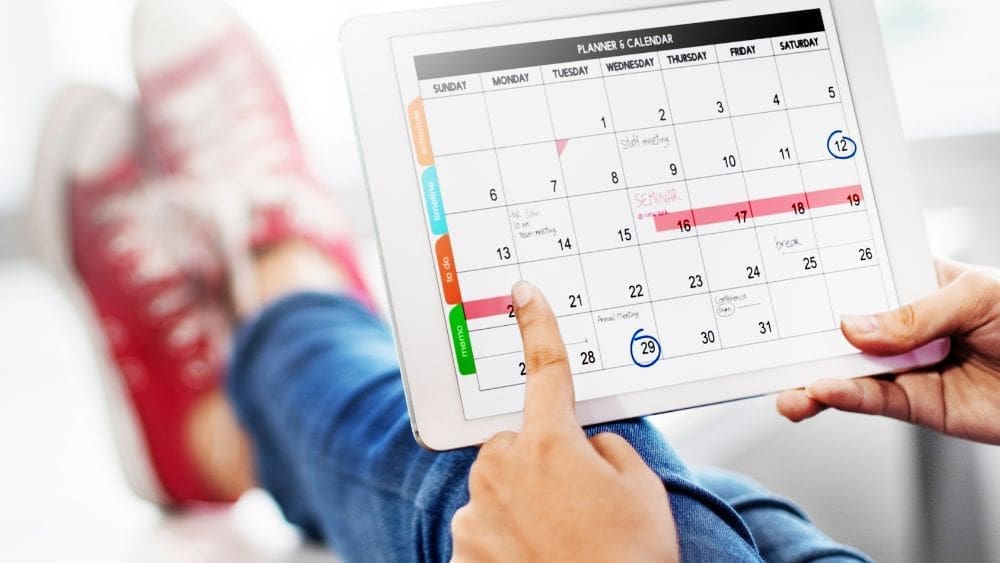 Great for small teams and easy collaboration
Great for small teams and easy collaboration - Trello
 Visual organization with drag-and-drop ease
Visual organization with drag-and-drop ease - Airtable
 Spreadsheet-database hybrid for complex content plans
Spreadsheet-database hybrid for complex content plans
- Google Calendar
Define Your Content Types
- Blog posts
- Social media updates
- Videos
- Podcasts
- Newsletters
Set Your Posting Frequency
- Be realistic! Better to under-promise and over-deliver
Balancing Content Types
Mix it up to keep your audience engaged:
- 80/20 Rule: 80% valuable, informative content; 20% promotional
- Content Pillars: Define 3-5 main themes and rotate through them
For example, if you’re a fitness brand, your pillars might be:
- Workout tips
- Nutrition advice
- Mental health
- Success stories
- Product spotlights
AI-Powered Content Ideation
Let AI be your brainstorming buddy:
ChatGPT for Topic Generation
- Input your content pillars and let AI suggest specific topics
- Refine the suggestions to fit your brand voice
Google Trends Integration
- Use AI tools that pull from Google Trends to predict upcoming hot topics
- Plan content around expected spikes in interest
Seasonal Planning
Don’t get caught off guard by holidays or industry events:
Annual Events
- Mark major holidays and plan content in advance
- Schedule posts for events like Black Friday or Cyber Monday
Industry-Specific Seasons
- E.g., “Back to School” for education brands or “Tax Season” for finance
-
- Stay tuned to pop culture events that align with your brand
- Plan reactive content for trending topics
Content Repurposing
Work smarter, not harder:
One to Many
- Turn a long-form blog post into:
- A series of social media posts
- An infographic
- A short video
- A podcast episode
- Turn a long-form blog post into:
Evergreen Updates
- Schedule regular updates for your best-performing evergreen content
- Set reminders to refresh statistics and examples
Collaboration and Workflow
Make your calendar a team effort:
Role Assignment
- Clearly mark who’s responsible for each piece of content
- Include deadlines for drafts, edits, and publication
Approval Process
- Build in time for reviews and revisions
- Use a tool like Asana to track content progress
Analytics Integration
Let data drive your decisions:
Performance Tracking
- Link each content piece to its performance metrics
- Use tools like Google Analytics to track engagement and conversions
Optimization Reminders
- Schedule check-ins to review and optimize underperforming content
- Plan A/B tests for headlines, visuals, or CTAs
Flexibility is Key
Leave room for the unexpected:
Buffer Days
- Build in “blank” days for timely, reactive content
- Use these for trending topics or unexpected company news
Quarterly Reviews
- Schedule time every 3 months to review and adjust your calendar
- Be ready to pivot based on what’s working (and what’s not)
Example: Monthly Content Calendar
Here’s what a month might look like for our fitness brand:
| Date | Content Type | Topic | Platform | Responsible |
|---|---|---|---|---|
| 1st | Blog Post | “10 Quick HIIT Workouts for Busy Professionals” | Website | Sarah |
| 3rd | Instagram Reel | Demo of a HIIT workout from the blog | Tom | |
| 5th | Newsletter | Featuring blog post + exclusive tip | Lisa | |
| 8th | Podcast Episode | Interview with a nutritionist on post-workout meals | Spotify, Apple Podcasts | Mike |
| 10th | Product Spotlight | New protein powder launch | All Social Platforms | Marketing Team |
| 15th | User-Generated Content | Share customer before/after photos | Instagram, Facebook | Community Manager |
| … | … | … | … | … |
Remember, your content calendar is a living document. It should evolve as your brand grows and your audience’s needs change. Keep it flexible, keep it fresh, and most importantly, keep it aligned with your overall content strategy.
Now go forth and plan that killer content! Your audience (and your sanity) will thank you.


